14 may 2016

Israeli forces opened fire on Palestinian farmers on Saturday morning northeast of Khan Yunis in the southern Gaza Strip.
Witnesses told Ma’an Israeli forces stationed in military watchtowers around Kisofim, near the border area between the besieged enclave and Israel, opened fire on Palestinians tending farmland in the area. No injuries were reported.
An Israeli army spokesperson told Ma’an they were looking into reports.
Israeli military forces routinely open-fire on Palestinian farmers in the Gaza Strip near the “buffer zone,” which lies on the border between the besieged enclave and Israel, despite a ceasefire agreement that ended the 2014 war.
Due to the high frequency of the attacks, live fire often goes unreported.
While Israel typically cites security concerns when targeting Palestinian agricultural areas, the Palestinian Center for Human Rights has reported in the past that Palestinians are often targeted when they pose no threat.
Approximately 35 percent of Palestinian agricultural land in Gaza is inaccessible without high personal risk, according to the center.
Witnesses told Ma’an Israeli forces stationed in military watchtowers around Kisofim, near the border area between the besieged enclave and Israel, opened fire on Palestinians tending farmland in the area. No injuries were reported.
An Israeli army spokesperson told Ma’an they were looking into reports.
Israeli military forces routinely open-fire on Palestinian farmers in the Gaza Strip near the “buffer zone,” which lies on the border between the besieged enclave and Israel, despite a ceasefire agreement that ended the 2014 war.
Due to the high frequency of the attacks, live fire often goes unreported.
While Israel typically cites security concerns when targeting Palestinian agricultural areas, the Palestinian Center for Human Rights has reported in the past that Palestinians are often targeted when they pose no threat.
Approximately 35 percent of Palestinian agricultural land in Gaza is inaccessible without high personal risk, according to the center.
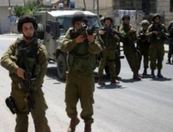
Israeli soldiers kidnapped, Saturday, two Palestinians in the southern West Bank city of Hebron, and in the Al-Aqsa Mosque, in occupied Jerusalem. Many Palestinians were injured in the Schools Street, in Jerusalem.
Media sources in Hebron said the soldiers have kidnapped a young man, identified as Islam Ayman Tamimi, 21, near the Ibrahim Mosque, in Hebron’s Old City.
Tamimi’s family said the soldiers detained many young men near the mosque, before kidnapping Islam, and took him to an unknown destination.
In addition, the soldiers invaded the Schools Street, in Jabal al-Mokabber neighborhood, southeast of Jerusalem, and closed it, causing a huge traffic jam.
The soldiers then fired many concussion grenades and gas bombs at students, trying to reach their schools, causing dozens of them to suffer the effects of tear gas inhalation. Many youngsters also hurled stones at army vehicles.
In addition, the soldiers kidnapped a young Palestinian man from the Al-Aqsa Sharia School, inside the Al-Aqsa Mosque, in occupied Jerusalem.
A mosque guard said the soldiers cuffed and blindfolded the kidnapped young man, and took him to an interrogation center in the city. His name remained unknown until the time of this report.
Media sources in Hebron said the soldiers have kidnapped a young man, identified as Islam Ayman Tamimi, 21, near the Ibrahim Mosque, in Hebron’s Old City.
Tamimi’s family said the soldiers detained many young men near the mosque, before kidnapping Islam, and took him to an unknown destination.
In addition, the soldiers invaded the Schools Street, in Jabal al-Mokabber neighborhood, southeast of Jerusalem, and closed it, causing a huge traffic jam.
The soldiers then fired many concussion grenades and gas bombs at students, trying to reach their schools, causing dozens of them to suffer the effects of tear gas inhalation. Many youngsters also hurled stones at army vehicles.
In addition, the soldiers kidnapped a young Palestinian man from the Al-Aqsa Sharia School, inside the Al-Aqsa Mosque, in occupied Jerusalem.
A mosque guard said the soldiers cuffed and blindfolded the kidnapped young man, and took him to an interrogation center in the city. His name remained unknown until the time of this report.
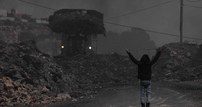
Medical sources reported Friday that Israeli soldiers shot and injured three Palestinian with live fire, during a protest march east of the al-Boreij refugee camp, in central Gaza.
The sources said the soldiers shot three Palestinians with live fire. The three were moved to the Al-Aqsa Hospital, suffering moderate wounds.
The soldiers also fired dozens of gas bombs, causing scores of residents to suffer from severe effects of tear gas inhalation.
The Palestinians were holding a protest march in their land, located near the border fence, east of the al-Boreij refugee camp, when the soldiers started firing at them, leading to clashes.
The march was meant to commemorate the Naqba, in 1948, in which 750.000 Palestinians were displaced for the creation of the state of Israel on their land. Many of those displaced became refugees in Gaza, where they and their descendants remain today.
After the soldiers began firing at the marchers, local youth hurled stones at the soldiers, across the border fence, while the army fired live rounds, rubber-coated steel bullets, gas bombs and concussion grenades.
Live bullet injury reported in Gaza border protests
A Palestinian young man was shot and injured as Israeli Occupation Forces (IOF) opened fire at a group of youths who gather every Friday near Gaza borders to show solidarity with Jerusalem Intifada.
The young man was taken to al-Aqsa Hospital for treatment as he was hit with a live bullet in his foot. Dozens of Gazans were killed and injured since the outbreak of Jerusalem Intifada on October 1, 2015.
This week’s demonstration came as millions of Palestinians and rights activists commemorate the Palestinian Nakba (catastrophe), when some 700,000 Palestinians were expelled from their lands in 1948 at gunpoint by Zionist gangs and remain scattered across refugee camps in the West Bank, the Gaza Strip, Jordan, Lebanon, Syria, and Iraq.
Nearly 531 Palestinian towns and cities were destroyed during the Nakba while 15,000 Palestinians were killed at the hands of Zionist gangs to pave the way for the establishment of Israel.
The sources said the soldiers shot three Palestinians with live fire. The three were moved to the Al-Aqsa Hospital, suffering moderate wounds.
The soldiers also fired dozens of gas bombs, causing scores of residents to suffer from severe effects of tear gas inhalation.
The Palestinians were holding a protest march in their land, located near the border fence, east of the al-Boreij refugee camp, when the soldiers started firing at them, leading to clashes.
The march was meant to commemorate the Naqba, in 1948, in which 750.000 Palestinians were displaced for the creation of the state of Israel on their land. Many of those displaced became refugees in Gaza, where they and their descendants remain today.
After the soldiers began firing at the marchers, local youth hurled stones at the soldiers, across the border fence, while the army fired live rounds, rubber-coated steel bullets, gas bombs and concussion grenades.
Live bullet injury reported in Gaza border protests
A Palestinian young man was shot and injured as Israeli Occupation Forces (IOF) opened fire at a group of youths who gather every Friday near Gaza borders to show solidarity with Jerusalem Intifada.
The young man was taken to al-Aqsa Hospital for treatment as he was hit with a live bullet in his foot. Dozens of Gazans were killed and injured since the outbreak of Jerusalem Intifada on October 1, 2015.
This week’s demonstration came as millions of Palestinians and rights activists commemorate the Palestinian Nakba (catastrophe), when some 700,000 Palestinians were expelled from their lands in 1948 at gunpoint by Zionist gangs and remain scattered across refugee camps in the West Bank, the Gaza Strip, Jordan, Lebanon, Syria, and Iraq.
Nearly 531 Palestinian towns and cities were destroyed during the Nakba while 15,000 Palestinians were killed at the hands of Zionist gangs to pave the way for the establishment of Israel.
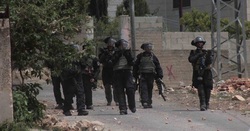
Dozens of Palestinian youths were injured on Friday as Israeli Occupation Forces (IOF) violently suppressed West Bank weekly marches.
Local sources affirmed that teargas bombs and rubber bullets were fired at the anti-occupation march in Bil’in town west of Ramallah. Several injuries were reported during the attack, while fire erupted in the neighboring fields, the sources added.
The march was kicked off Friday morning in Bil’in town marking the 68th anniversary of the Nakba (catastrophe) before being brutally suppressed by Israeli forces.
A Palestinian anti-occupation activist, Abdullah Abu Rahma, and an unidentified foreign peace activist were detained during the event. Israeli soldiers fired rubber-coated steel bullets, long-range tear gas canisters, and stun grenades at the demonstrators as they neared Israel’s apartheid wall.
Dozens of teargas suffocation cases were reported among the participants. Along the same line, Israeli forces suppressed the anti-settlement weekly marches in the towns of Nilin and Nabi Salah in Ramallah and Kafer Qaddum town in Qalqilia.
In Qalqilia, Israeli forces injured two Palestinians during a protest in Kafr Qaddum and dozens of demonstrators choked on tear gas including children and women.
Murad Shtewi, a coordinator for the Popular Resistance Committee, reported that Israeli forces “heavily” sprayed sponge and live bullets at the demonstrators, injuring a 26-year-old man after a sponge bullet struck his head while an 18-year-old youth was hit in the foot with a live bullet.
Both were taken to the Rafidia hospital in Nablus for treatment, he added. Israeli forces also showered the demonstrators with hundreds of tear gas canisters as Israeli military jeeps fired long-range canisters indiscriminately at the crowd with many smashing through windows of nearby houses.
The canisters reportedly struck the homes of Abdullah Juma and Abdullah Ali and caused their families to suffer breathing problems.
Local sources affirmed that teargas bombs and rubber bullets were fired at the anti-occupation march in Bil’in town west of Ramallah. Several injuries were reported during the attack, while fire erupted in the neighboring fields, the sources added.
The march was kicked off Friday morning in Bil’in town marking the 68th anniversary of the Nakba (catastrophe) before being brutally suppressed by Israeli forces.
A Palestinian anti-occupation activist, Abdullah Abu Rahma, and an unidentified foreign peace activist were detained during the event. Israeli soldiers fired rubber-coated steel bullets, long-range tear gas canisters, and stun grenades at the demonstrators as they neared Israel’s apartheid wall.
Dozens of teargas suffocation cases were reported among the participants. Along the same line, Israeli forces suppressed the anti-settlement weekly marches in the towns of Nilin and Nabi Salah in Ramallah and Kafer Qaddum town in Qalqilia.
In Qalqilia, Israeli forces injured two Palestinians during a protest in Kafr Qaddum and dozens of demonstrators choked on tear gas including children and women.
Murad Shtewi, a coordinator for the Popular Resistance Committee, reported that Israeli forces “heavily” sprayed sponge and live bullets at the demonstrators, injuring a 26-year-old man after a sponge bullet struck his head while an 18-year-old youth was hit in the foot with a live bullet.
Both were taken to the Rafidia hospital in Nablus for treatment, he added. Israeli forces also showered the demonstrators with hundreds of tear gas canisters as Israeli military jeeps fired long-range canisters indiscriminately at the crowd with many smashing through windows of nearby houses.
The canisters reportedly struck the homes of Abdullah Juma and Abdullah Ali and caused their families to suffer breathing problems.

Vast tracts of cultivated land went on fire and burned near al-Fawwar refugee camp, south of al-Khalil city, after Israeli troops at dawn Saturday fired flares during a campaign in the camp.
The invading troops also clashed with local young men in the neighborhoods of the camp and intensively fired tear gas and stun grenades at them.
Another group of soldiers also stormed at dawn different neighborhoods of Bethlehem.
In a separate incident, several military patrols at an early morning hour raided Iraq Burin town, south of Nablus, and stayed there for several hours before withdrawing, without making arrests.
The invading troops also clashed with local young men in the neighborhoods of the camp and intensively fired tear gas and stun grenades at them.
Another group of soldiers also stormed at dawn different neighborhoods of Bethlehem.
In a separate incident, several military patrols at an early morning hour raided Iraq Burin town, south of Nablus, and stayed there for several hours before withdrawing, without making arrests.
13 may 2016
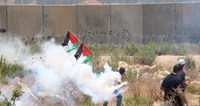
Dozens of Palestinian citizens suffered from inhaling tear gas on Friday when the Israeli occupation forces (IOF) violently attacked their peaceful rally in Bil'in town, west of Ramallah.
The rally was a procession of bicycles organized to mark the 68th anniversary of the Palestinian Nakba (catastrophe). Dozens of young cyclists participated in the procession from Yasser Arafat Square in Ramallah to Bil'in town.
The IOF showered the participants with a hail of tear gas grenades as they reached Bil'in town, west of Ramallah.
The rally was a procession of bicycles organized to mark the 68th anniversary of the Palestinian Nakba (catastrophe). Dozens of young cyclists participated in the procession from Yasser Arafat Square in Ramallah to Bil'in town.
The IOF showered the participants with a hail of tear gas grenades as they reached Bil'in town, west of Ramallah.

The Israeli occupation navy on Friday morning opened machinegun fire at Palestinian fishing boats off the northern coast of the Gaza Strip.
Palestinian sources said that Israeli gunboats showered fishermen and their boats with a volley of bullets during their presence near the shore of Beit Lahiya, north of Gaza.
Luckily, no one was hurt in the gunfire attack, which is part of ongoing violations carried out by the Israeli navy against the fishermen and their boats in Palestinian waters.
Palestinian sources said that Israeli gunboats showered fishermen and their boats with a volley of bullets during their presence near the shore of Beit Lahiya, north of Gaza.
Luckily, no one was hurt in the gunfire attack, which is part of ongoing violations carried out by the Israeli navy against the fishermen and their boats in Palestinian waters.
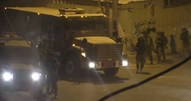
The Israeli Occupation Forces (IOF) launched overnight and at dawn Friday a large-scale raid and search campaign in different parts of Jenin and Bethlehem in the West Bank.
Local sources said that different areas in Jenin were stormed and searched including an evacuated settlement. Israeli forces were deployed in large numbers in the stormed areas and erected a checkpoint at Nablus-Jenin road.
Dozens of Palestinian vehicles were stopped and searched at the checkpoint. Similar search campaigns were also carried out in Beit Fujar town, south of Bethlehem. No arrests were reported during the raids.
Local sources said that different areas in Jenin were stormed and searched including an evacuated settlement. Israeli forces were deployed in large numbers in the stormed areas and erected a checkpoint at Nablus-Jenin road.
Dozens of Palestinian vehicles were stopped and searched at the checkpoint. Similar search campaigns were also carried out in Beit Fujar town, south of Bethlehem. No arrests were reported during the raids.

Israeli soldiers attacked, on Wednesday evening, the funeral ceremony of an elderly Palestinian woman, east of the Al-Aqsa Mosque, in occupied Jerusalem, as the mourners were heading towards the graveyard in Silwan town.
The Wadi Hilweh Information Center in Silwan (Silwanic) has reported that the soldiers attacked the funeral of Jamila Ibrahim al-A’war, 89, from Ein al-Louza neighborhood in Silwan, just as the mourners reached Bab ar-Rahma graveyard, adjacent to the eastern wall of Al-Aqsa Mosque, after conducting prayers in Ein al-Louza mosque.
Silwanic said that the army surrounded the graveyard, and when the Palestinians reached there to conduct burial ceremonies, the soldiers started insulting them and assaulted several Palestinians with batons, before throwing concussion grenades, and gas bombs on them, causing many injuries.
The soldiers removed the Palestinians from the graveyard, and alleged that it is located on a confiscated land that the Palestinians are not allowed to use, before closing its gate, and assaulted many of them.
Nearly 30 minutes later, the soldiers allowed a few Palestinians to enter the graveyard to bury the deceased woman, while dozens of residents stayed on the main street. This came after an army officer checked the issue with his superiors, who told him that “the location of the grave is not within the confiscated area.”
Two weeks ago, the soldiers attacked the funeral procession of Jamal Mohammad al-‘Abbassi, in the same graveyard, causing dozens to suffer the effects of tear gas inhalation, and many others suffered cuts and bruises.
The Wadi Hilweh Information Center in Silwan (Silwanic) has reported that the soldiers attacked the funeral of Jamila Ibrahim al-A’war, 89, from Ein al-Louza neighborhood in Silwan, just as the mourners reached Bab ar-Rahma graveyard, adjacent to the eastern wall of Al-Aqsa Mosque, after conducting prayers in Ein al-Louza mosque.
Silwanic said that the army surrounded the graveyard, and when the Palestinians reached there to conduct burial ceremonies, the soldiers started insulting them and assaulted several Palestinians with batons, before throwing concussion grenades, and gas bombs on them, causing many injuries.
The soldiers removed the Palestinians from the graveyard, and alleged that it is located on a confiscated land that the Palestinians are not allowed to use, before closing its gate, and assaulted many of them.
Nearly 30 minutes later, the soldiers allowed a few Palestinians to enter the graveyard to bury the deceased woman, while dozens of residents stayed on the main street. This came after an army officer checked the issue with his superiors, who told him that “the location of the grave is not within the confiscated area.”
Two weeks ago, the soldiers attacked the funeral procession of Jamal Mohammad al-‘Abbassi, in the same graveyard, causing dozens to suffer the effects of tear gas inhalation, and many others suffered cuts and bruises.
12 may 2016
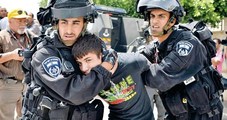
The Israeli police arrested Thursday seven Palestinian minors for allegedly being involved in anti-occupation attacks.
According to Israeli police’s statement, six of the arrested minors are aged between 14 and 17 and were detained for allegedly setting fire near the Apartheid Wall north of occupied Jerusalem.
Along the same line, violent clashes erupted in Nabi Yacob area after being brutally stormed by Israeli policemen amid heavy fire of teargas bombs and sound grenades.
A 16-year-old boy was also arrested for allegedly being involved in stone-throwing attack against settlers’ cars, causing material damage. Since the outbreak of Jerusalem Intifada on October 1 last year, Israel stepped up its arrest campaigns against Palestinian children.
According the Palestine Center for Prisoners’ Studies, more than 2000 Palestinian minors were arrested since October 1. 2000 minors were among 5500 detainees rounded up since the outbreak of Jerusalem Intifada, spokesman for the center Riyad al-Ashqar clarified.
70% of the detained minors were arrested in al-Khalil and occupied Jerusalem, he added, pointing out that many of them are under the age of 10 while 32 of them suffered live bullet injuries during their arrest.
The majority of the child detainees were released, while 450 minors are still held behind Israeli bars including an 11-year-old boy.
According to Israeli police’s statement, six of the arrested minors are aged between 14 and 17 and were detained for allegedly setting fire near the Apartheid Wall north of occupied Jerusalem.
Along the same line, violent clashes erupted in Nabi Yacob area after being brutally stormed by Israeli policemen amid heavy fire of teargas bombs and sound grenades.
A 16-year-old boy was also arrested for allegedly being involved in stone-throwing attack against settlers’ cars, causing material damage. Since the outbreak of Jerusalem Intifada on October 1 last year, Israel stepped up its arrest campaigns against Palestinian children.
According the Palestine Center for Prisoners’ Studies, more than 2000 Palestinian minors were arrested since October 1. 2000 minors were among 5500 detainees rounded up since the outbreak of Jerusalem Intifada, spokesman for the center Riyad al-Ashqar clarified.
70% of the detained minors were arrested in al-Khalil and occupied Jerusalem, he added, pointing out that many of them are under the age of 10 while 32 of them suffered live bullet injuries during their arrest.
The majority of the child detainees were released, while 450 minors are still held behind Israeli bars including an 11-year-old boy.
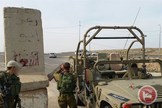
Israeli forces opened fire at Palestinian farmers on Thursday while deployed along the border east of the town of al-Qarara in the southern Gaza Strip, witnesses told Ma’an.
Witnesses also said Israeli forces opened fire on Palestinians along the border east of Abasan near the al-Farrahin neighborhood in southern Gaza. No injuries were reported in both cases.
An Israeli army spokesperson told Ma’an they were looking into reports.Israeli military forces routinely open-fire on Palestinian farmers in the Gaza Strip near the “buffer zone,” which lies on the border between the besieged enclave and Israel, despite a ceasefire agreement that ended the 2014 war.
Israeli military activities, which have become almost daily occurrences, often interfere with Palestinian farmers whose land lies in the area. Approximately 35 percent of Palestinian agricultural land in Gaza is inaccessible without high personal risk, according to the Palestinian Center for Human Rights.
Witnesses also said Israeli forces opened fire on Palestinians along the border east of Abasan near the al-Farrahin neighborhood in southern Gaza. No injuries were reported in both cases.
An Israeli army spokesperson told Ma’an they were looking into reports.Israeli military forces routinely open-fire on Palestinian farmers in the Gaza Strip near the “buffer zone,” which lies on the border between the besieged enclave and Israel, despite a ceasefire agreement that ended the 2014 war.
Israeli military activities, which have become almost daily occurrences, often interfere with Palestinian farmers whose land lies in the area. Approximately 35 percent of Palestinian agricultural land in Gaza is inaccessible without high personal risk, according to the Palestinian Center for Human Rights.
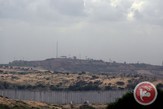
Israeli forces opened fire at Palestinian farmers in lands near the border fence in the southern Gaza Strip early on Thursday morning.
Witnesses told Ma'an that Israeli forces deployed in military towers at the border fence in Khuzaa, east of Khan Yunis, opened fire at farmers who were harvesting their wheat.
Meanwhile, Israeli navy forces opened fire at fishermen off the coast of the northern Gaza Strip, Gaza City and the southern Gaza Strip.No injuries were reported.
An Israeli army spokesperson told Ma’an they were looking into the reports.Israeli military incursions inside the besieged Gaza Strip and near the “buffer zone" which lies on both land and sea sides of Gaza, have long been a near-daily occurrence.
Palestinians who work near the “buffer zone” between the Palestinian enclave and Israel often come under fire from military forces, as the Israeli military has not made clear the precise area of the designated zone.
The Israeli army regularly open fires on Palestinian fisherman and farmers along the border areas, despite a ceasefire agreement that ended the 2014 war.
Witnesses told Ma'an that Israeli forces deployed in military towers at the border fence in Khuzaa, east of Khan Yunis, opened fire at farmers who were harvesting their wheat.
Meanwhile, Israeli navy forces opened fire at fishermen off the coast of the northern Gaza Strip, Gaza City and the southern Gaza Strip.No injuries were reported.
An Israeli army spokesperson told Ma’an they were looking into the reports.Israeli military incursions inside the besieged Gaza Strip and near the “buffer zone" which lies on both land and sea sides of Gaza, have long been a near-daily occurrence.
Palestinians who work near the “buffer zone” between the Palestinian enclave and Israel often come under fire from military forces, as the Israeli military has not made clear the precise area of the designated zone.
The Israeli army regularly open fires on Palestinian fisherman and farmers along the border areas, despite a ceasefire agreement that ended the 2014 war.
11 may 2016
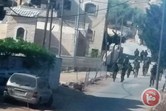
Israeli troops shot and injured two young Palestinian men, one of them seriously, during clashes in the village of Kafr Aqab north of occupied East Jerusalem early on Wednesday morning.
Locals told Ma’an that large numbers of Israeli troops stormed Kafr Aqab and the nearby Qalandiya refugee camp, leading local youths to clash with them.
Witnesses said Israeli troops fired gunshots in every direction as they ransacked homes and shops in Kafr Aqab.
Palestinian medical sources said ambulances evacuated a young Palestinian man in serious condition to a hospital in East Jerusalem after he was shot in the chest.
Another young man was evacuated to the Palestine Medical Complex in Ramallah after being shot in the leg. Doctors described his wound as moderate.
An Israeli army spokeswoman confirmed that clashes occurred in the area following "routine activity" by Israeli forces, saying that a "violent mob attacked the soldiers with firebombs and boulders." She added that the soldiers reportedly fired in the air in response.
The spokeswoman said that the army was aware that a Palestinian had been shot in the chest, adding that the case was "being reviewed."
Palestinians are frequently injured during clashes with Israeli forces in the occupied Palestinian territory. According to the UN Office for the Coordination of Humanitarian Affairs (OCHA), at least 348 Palestinians, 94 of them children, were wounded by Israeli soldiers in the month of March alone.
Locals told Ma’an that large numbers of Israeli troops stormed Kafr Aqab and the nearby Qalandiya refugee camp, leading local youths to clash with them.
Witnesses said Israeli troops fired gunshots in every direction as they ransacked homes and shops in Kafr Aqab.
Palestinian medical sources said ambulances evacuated a young Palestinian man in serious condition to a hospital in East Jerusalem after he was shot in the chest.
Another young man was evacuated to the Palestine Medical Complex in Ramallah after being shot in the leg. Doctors described his wound as moderate.
An Israeli army spokeswoman confirmed that clashes occurred in the area following "routine activity" by Israeli forces, saying that a "violent mob attacked the soldiers with firebombs and boulders." She added that the soldiers reportedly fired in the air in response.
The spokeswoman said that the army was aware that a Palestinian had been shot in the chest, adding that the case was "being reviewed."
Palestinians are frequently injured during clashes with Israeli forces in the occupied Palestinian territory. According to the UN Office for the Coordination of Humanitarian Affairs (OCHA), at least 348 Palestinians, 94 of them children, were wounded by Israeli soldiers in the month of March alone.
10 may 2016
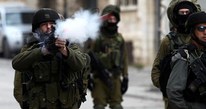
Israeli soldiers fired, Monday, several gas bombs at students and health workers of the “Health Work Committees,” in Hebron, in the southern part of the occupied West Bank, causing many to suffer the effects of tear gas inhalation.
The nursing students, and health workers, are with the Emergency Center of the Health Work Committees, in the southern part of Hebron.
They were trying to cross the Abu ar-Reesh Israeli military roadblock, when the soldiers started firing gas bombs at them, causing many to suffer severe effects of tear gas inhalation.
Some of the Israeli gas bombs were fired directly into the health center.
The Emergency Unit of the Health Work Committees has been subject to numerous Israeli violations and invasions, as the soldiers repeatedly fired gas bombs into the building and sprayed it with waste-water mixed with chemicals, in addition to repeated assaults targeting its workers and their freedom of movement.
The center provides medical services to more than 60.000 Palestinians in the area, and is also subject to attacks by fanatic Israeli colonists, and frequent army invasions.
Civilians choke on teargas fired by IOF in southern al-Khalil
A number of citizens in the southern neighborhood of al-Khalil city choked on teargas bombs fired by Israeli occupation forces (IOF) on Tuesday morning.
The PIC reporter said that soldiers manning the Abul Reesh roadblock fired teargas canisters at the headquarters of the health committees in the southern district of al-Khalil.
He said that the citizens panicked as a result of the sudden attack and some of them choked on teargas.
The IOF continues to harass citizens heading to the health committees’ premises due to its proximity to the military barrier and had recently installed cement blocks to make it more difficult for citizens to reach it.
The nursing students, and health workers, are with the Emergency Center of the Health Work Committees, in the southern part of Hebron.
They were trying to cross the Abu ar-Reesh Israeli military roadblock, when the soldiers started firing gas bombs at them, causing many to suffer severe effects of tear gas inhalation.
Some of the Israeli gas bombs were fired directly into the health center.
The Emergency Unit of the Health Work Committees has been subject to numerous Israeli violations and invasions, as the soldiers repeatedly fired gas bombs into the building and sprayed it with waste-water mixed with chemicals, in addition to repeated assaults targeting its workers and their freedom of movement.
The center provides medical services to more than 60.000 Palestinians in the area, and is also subject to attacks by fanatic Israeli colonists, and frequent army invasions.
Civilians choke on teargas fired by IOF in southern al-Khalil
A number of citizens in the southern neighborhood of al-Khalil city choked on teargas bombs fired by Israeli occupation forces (IOF) on Tuesday morning.
The PIC reporter said that soldiers manning the Abul Reesh roadblock fired teargas canisters at the headquarters of the health committees in the southern district of al-Khalil.
He said that the citizens panicked as a result of the sudden attack and some of them choked on teargas.
The IOF continues to harass citizens heading to the health committees’ premises due to its proximity to the military barrier and had recently installed cement blocks to make it more difficult for citizens to reach it.
9 may 2016

19 Palestinian young men were injured as clashes erupted on Monday evening in Alezariya town east of occupied Jerusalem after Israeli policemen raided the town.
According to Quds Press, the clashes broke out Monday afternoon and lasted for long hours amid heavy firing of teargas bombs and rubber bullets on the part of the Israeli policemen.
Several injuries among Palestinian civilians were reported during the confrontation. Local youths responded by throwing stones and Molotov cocktails at the Israeli policemen.
Palestinian medics affirmed that two rubber bullet injuries and 19 teargas suffocation cases were reported during the clashes.
According to Quds Press, the clashes broke out Monday afternoon and lasted for long hours amid heavy firing of teargas bombs and rubber bullets on the part of the Israeli policemen.
Several injuries among Palestinian civilians were reported during the confrontation. Local youths responded by throwing stones and Molotov cocktails at the Israeli policemen.
Palestinian medics affirmed that two rubber bullet injuries and 19 teargas suffocation cases were reported during the clashes.

Israeli warplanes launched a series of mock raids on different areas of the Gaza Strip on Monday morning.
The PIC reporter quoted locals as saying that they heard loud explosions in different areas of the Strip, which later turned out to be the result of Israeli F-16s breaking the sound barrier.
The mock raids constitute part of the psychological warfare waged by the Israeli occupation forces against the Gaza Strip after calm was restored recently to the eastern borders of the enclave following three days of intermittent clashes.
The PIC reporter quoted locals as saying that they heard loud explosions in different areas of the Strip, which later turned out to be the result of Israeli F-16s breaking the sound barrier.
The mock raids constitute part of the psychological warfare waged by the Israeli occupation forces against the Gaza Strip after calm was restored recently to the eastern borders of the enclave following three days of intermittent clashes.
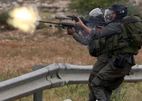
Israeli Soldiers, stationed across the border fence, opened fired earlier on Monday on a number of Palestinian farmers, in their own agricultural lands, east of Khuza’a town, east of Khan Younis city, in the southern part of the Gaza Strip.
Media sources said the soldiers, stationed on military towers across the border fence, east of Khuza’a, fired dozens of live rounds towards the farmers, forcing them to leave their lands; no injuries were reported.
The soldiers conduct daily attacks and violations against the Palestinians in the besieged coastal region, especially in border areas in the northern and eastern parts of the Gaza Strip, preventing the Palestinian from entering their lands.
The attacks also target Palestinian fishers, and their boats, in Gaza territorial waters, in direct violation of every ceasefire agreement.
On Thursday evening, May 5, Israeli soldiers killed a Palestinian woman, 55, and injured a young man, after firing many shells into the al-Fakhari area, east of Khan Younis.
On Saturday, the Hamas movement in Gaza sent indirect messages, through four mediating parties, urging calm to avoid a new war, while the Israeli army withdrew from areas it invaded near the border, after its engineering corps searched for siege-busting tunnels.
Israeli military sources said the army will resume its activities whenever needed, and that the it does not intend to be fully cease its operations in the “buffer zone,” an area of around 300 meters on the Gaza side of the border fence.
Media sources said the soldiers, stationed on military towers across the border fence, east of Khuza’a, fired dozens of live rounds towards the farmers, forcing them to leave their lands; no injuries were reported.
The soldiers conduct daily attacks and violations against the Palestinians in the besieged coastal region, especially in border areas in the northern and eastern parts of the Gaza Strip, preventing the Palestinian from entering their lands.
The attacks also target Palestinian fishers, and their boats, in Gaza territorial waters, in direct violation of every ceasefire agreement.
On Thursday evening, May 5, Israeli soldiers killed a Palestinian woman, 55, and injured a young man, after firing many shells into the al-Fakhari area, east of Khan Younis.
On Saturday, the Hamas movement in Gaza sent indirect messages, through four mediating parties, urging calm to avoid a new war, while the Israeli army withdrew from areas it invaded near the border, after its engineering corps searched for siege-busting tunnels.
Israeli military sources said the army will resume its activities whenever needed, and that the it does not intend to be fully cease its operations in the “buffer zone,” an area of around 300 meters on the Gaza side of the border fence.
